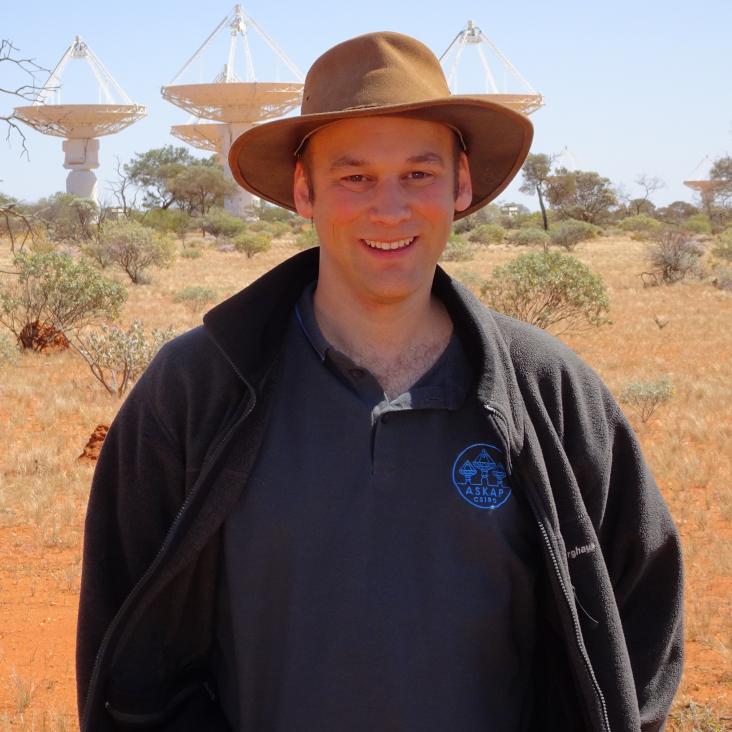A comparative study of intervening and associated H i 21-cm absorption profiles in redshifted galaxies
Monthly Notices of the Royal Astronomical Society Oxford University Press (OUP) 462:4 (2016) 4197-4207
Illuminating the past 8 billion years of cold gas towards two gravitationally lensed quasars
MONTHLY NOTICES OF THE ROYAL ASTRONOMICAL SOCIETY 465:4 (2016) 4450-4467
Using 21 cm absorption surveys to measure the average H i spin temperature in distant galaxies
Monthly Notices of the Royal Astronomical Society Oxford University Press (OUP) 462:2 (2016) 1341-1350
The Australian Square Kilometre Array Pathfinder: Performance of the Boolardy Engineering Test Array
PUBLICATIONS OF THE ASTRONOMICAL SOCIETY OF AUSTRALIA 33 (2016) ARTN e042
Abstract:
We describe the performance of the Boolardy Engineering Test Array (BETA), the prototype for the Australian Square Kilometre Array Pathfinder telescope ASKAP. BETA is the first aperture synthesis radio telescope to use phased array feed technology, giving it the ability to electronically form up to nine dual-polarization beams. We report the methods developed for forming and measuring the beams, and the adaptations that have been made to the traditional calibration and imaging procedures in order to allow BETA to function as a multi-beam aperture synthesis telescope. We describe the commissioning of the instrument and present details of BETA's performance: sensitivity, beam characteristics, polarimetric properties and image quality. We summarise the astronomical science that it has produced and draw lessons from operating BETA that will be relevant to the commissioning and operation of the final ASKAP telescope.High-velocity OH megamasers in IRAS 20100-4156: evidence for a supermassive black hole
MONTHLY NOTICES OF THE ROYAL ASTRONOMICAL SOCIETY 460:2 (2016) 2180-2185


